Control Panel 2020 A
page modified January 18, 2021
Specifications may change without notice.
Do not use this device in any situation where loss of life or property would be the result of the device missbehaving or failing.
If you go beyond this rule, you are self certifying this device.
This device is built by hobbyists for a hobby project.
We do not certify that this design, or any particular unit, is sound.
Use at your own risk.
Feel free to use these 3 images for publicity or articles!
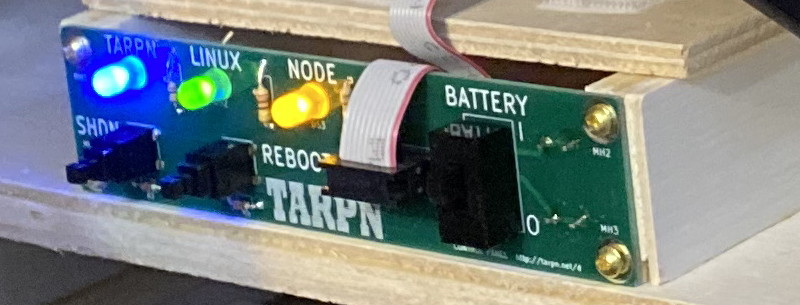
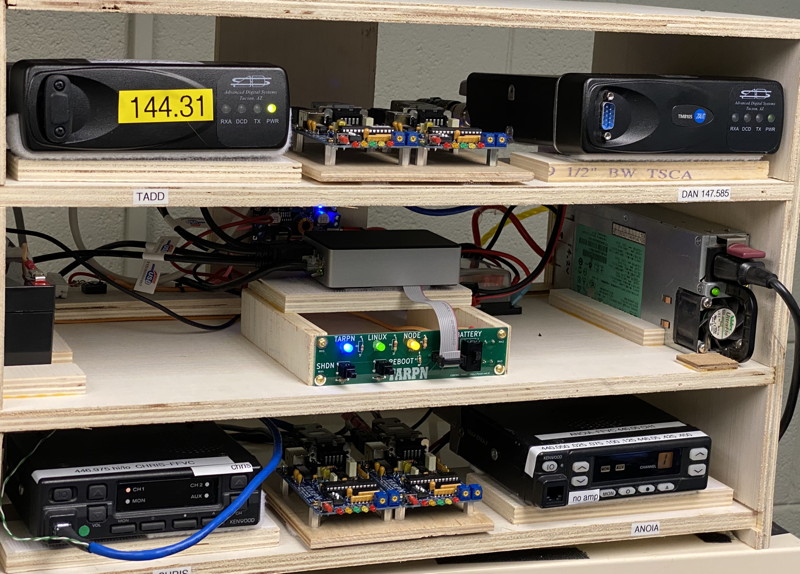
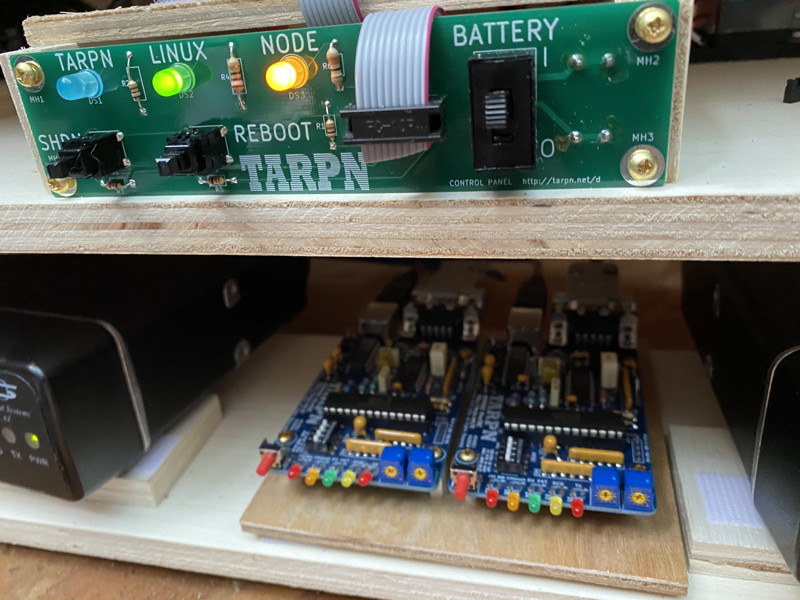
These are the assembly instructions for the 2020-A Control Panel.
The board is marked on the back with the silk-screen as shown:

Make sure the silkscreen information on the board you are assembling matches this.
|
First Time Kit Builders
People who are unfamiliar with kit building may approach this as their first kit but there are a few caveats.
- Be careful. While this kit is one of the easier and better documented kits, and building a kit is pretty easy,
a cavalier attitude will result in hard-to-diagnose failures.
-
Have an experienced hand available for guidance and troubleshooting.
Building a kit is much easier than fixing a kit.
It is possible to reverse a soldering mistake, but it is definitely much harder than doing it right the first time.
If you have any doubts, send a message to [email protected] and we'll try to help you out.
-
If you find anything in the instructions which is unclear, write us.
We'll try to fix it.
-
If you are a first time kit builder, please consult your local experienced builder for help in reversing any mistake.
-
#4 is important.
-
Adafruit
has some excellent tutorials on soldering.
Buy the board and parts kit from Aaron
The purchase will go through PayPal.
When you click Add to Cart, it will submit a $19 purchase to PayPal which will open it's own dialog to complete the purchase.
As part of the exchange with Paypal, you'll have an opportunity to buy more than one of the kits and to specify shipping etc.
We don't have a system for sharing shipping costs.
What you will need
- Raspberry PI with TARPN installation
- Magnifying glass or smart-phone with close-up zoom capability
- Solder sucker (DS017 Soldapult for instance)
- Diagonal Cutters
- Thin rosin core solder - 0.02inch to 0.04inch - 0.5mm to 1mm. Kester 0.02inch Solder
- Soldering iron with thin tip - I use a Weller temperature controlled soldering station at 650 degrees.
This is the good soldering station at $120. Weller soldering station
This one’s probably good too at $45. Far East brand soldering station
- Computer capable of supporting a KISS TNC connected via USB
- Radio wired for KPC-3, TNC-PI or NinoTNC 9 pin D-sub connector
|
⇒ | Excepting the battery wiring lugs, all of the parts are inserted from the silk-screened side of the board, i.e. from the side on which the white writing is printed.
|
|
⇒ | The resistors are non-polarized.
You can put either end of the resistor in either of the two holes.
|
| ⇒ | The LEDs are polarized.
The instructions are specific.
|
Soldering tips
Insert the component so it is flush without breaking the part.
Splay the wires out to keep the part in the board while you invert it to solder.
Solder the part.

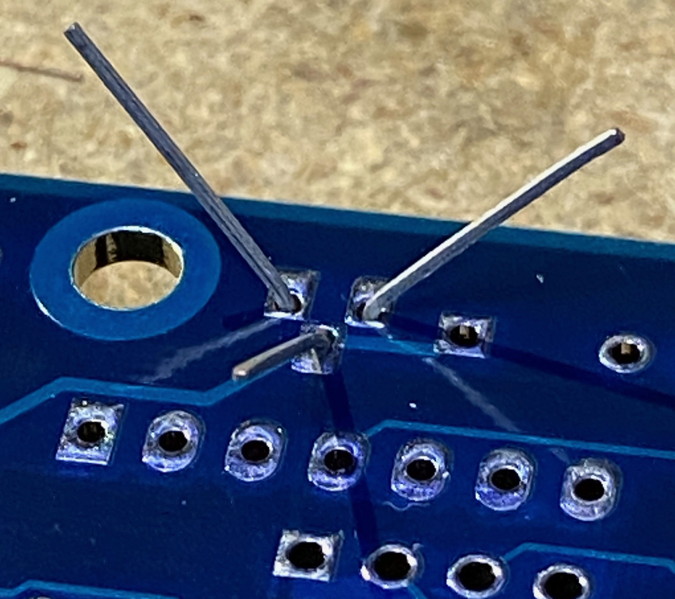
Inspect the leads to make sure the solder comes up over the lead for a visible amount.
Cut the lead at the wire, not the solder.
The solder is your friend.
What you do NOT want is a lead which is not making good electrical contact with the hole.

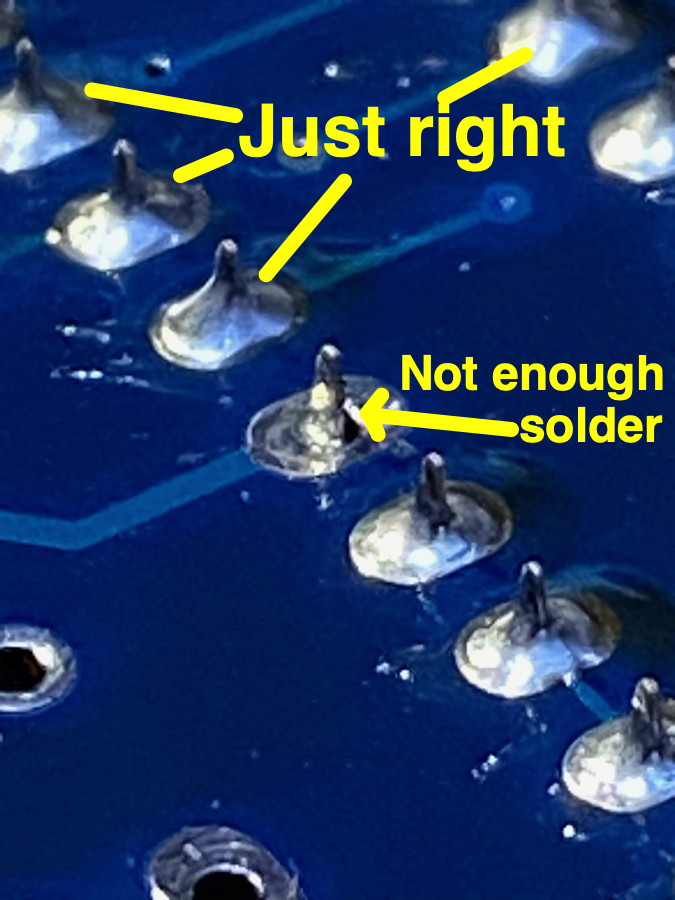
When debugging a kit because something went wrong, it is nice to have a clear image of the naked printed circuit board (PCB). Here you go:
Control Panel 2020-A board:
Click either to enlarge

 Here's the control panel PCB's schematic. Click to load the PDF.
Here's the control panel PCB's schematic. Click to load the PDF.
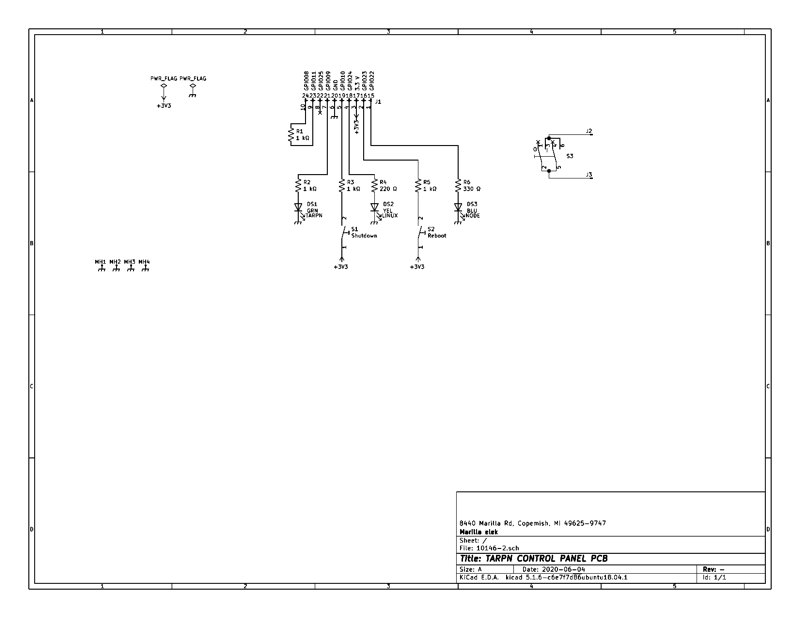
Circuit description
There are two different circuits in this device.
The first is a switch which connects or disconnects the VCC to the battery.
The switch is capable of interrupting up to 3 A of current.
Use crimp-on lugs on the wire to the battery.
See the Robust Power for Raspberry PI page.
The second part of the circuit is the connection to the Raspberry PI.
The key element is a jumper between GPIO pins.
A script runs on the Raspberry PI called pi_shutdown_background.sh.
That script initializes the GPIOs used for the control panel and looks for a short between GPIOs 8 and 11, which map to pins 23 and 24 of the expansion connector.
See the image below.
There are two GPIOs configured as inputs. Pull them to 3.3v (through a resistor) and pin 19 will cause a Linux shutdown, and pin 16 will cause a Linux reboot.
Note that neither of these affect the power to the Raspberry PI.
There are three outputs which are useful for driving LEDs.
Again, make sure the current does not exceed the drive power of a Raspberry PI GPIO.
### toward SDcard
### output high if LINBPQ up GPIO 22 GPIO 23 input. if high, do reboot
### 3V3 PWR GPIO 24 output high if LINUX
### Shutdown when High input GPIO 10 GROUND
### .5hz output GPIO 9 GPIO 25 NC
### /======= input GPIO 11 GPIO 8 output >>====\
### | toward USB |
### | |
### \===============================================/
When I made the diagram to the right we were using the TNC-PI which connected to the upper 10 pins.
The lower boxed set of pins would be for the PWRMAN board, or the One-Button-Shutdown board.
The control panel presented here is based on the One-Button-Shutdown design.
Larry WN8P did the layout for the Control Panel board based on my One-Button-Shutdown design.
You're going to have to do something to make the ribbon cable fit on the appropriate 10 pins.
I cut the expansion connector pins 13, 14, 25 and 26 using a diagonal cutter.
Be careful to not let the pins fly or get in your eye.
It could be bad.
|

|
Assembly Instructions
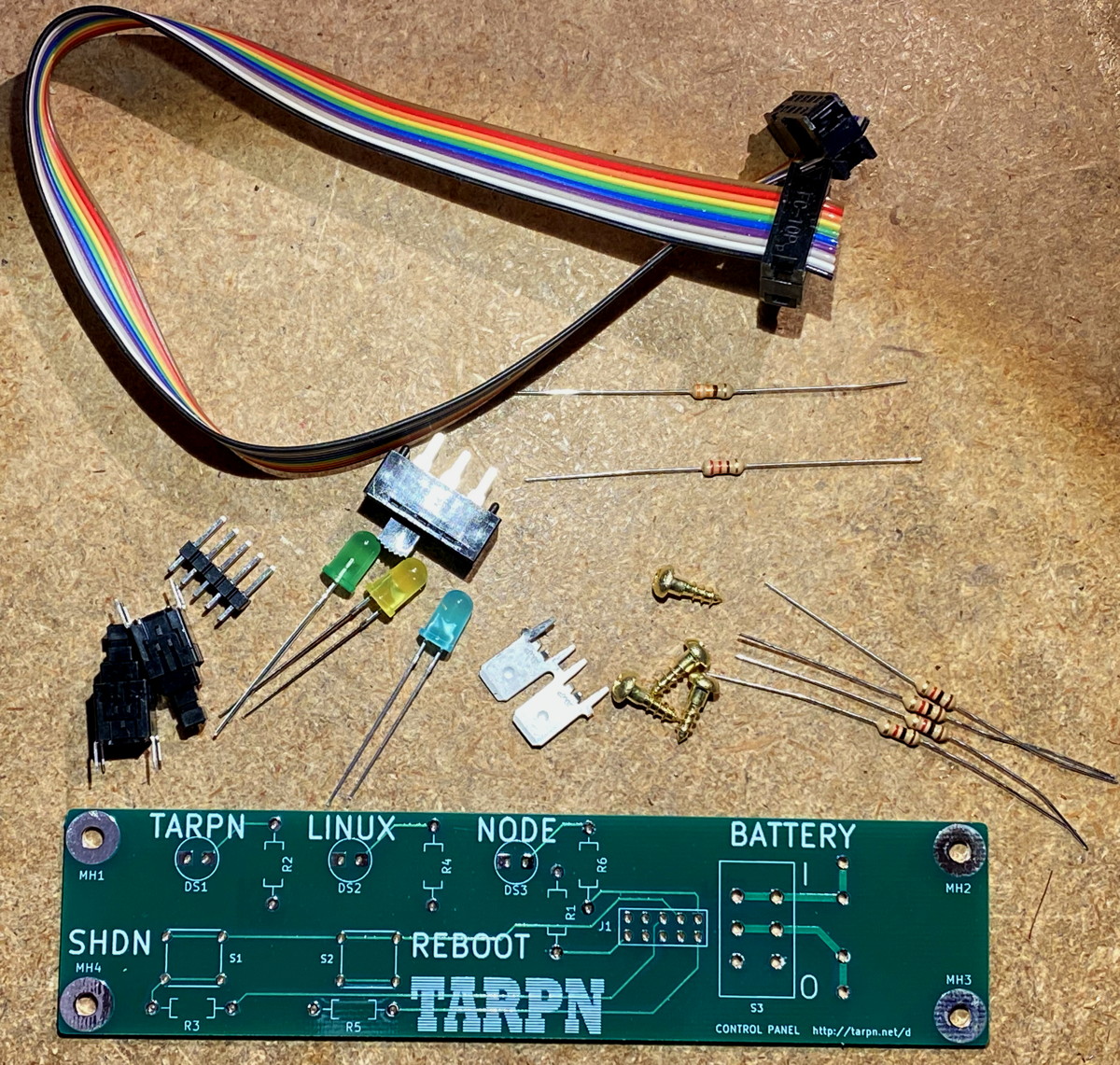
Some of the images on this page can be enlarged and opened in a new browser tab by clicking on them.
Install parts in this order:
| 1 |
R1, R2, R3, R5 |
1 k Ω 5% 1/4 W resistor
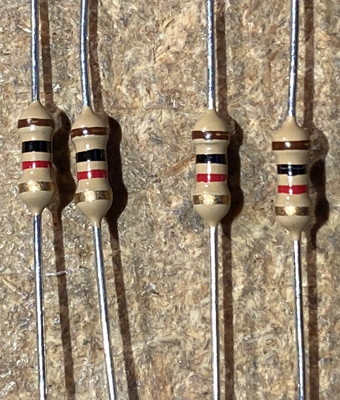 |
R1 serves as a link between a GPIO output and a GPIO input.
The raspberry PI uses the presence of this link as a signal tha the control panel is hooked up.
R2 is used as a current limiting resistor for the blue LED DS1.
Resistors are not polorized so you can put either end in either hole.
It might help to bend the wires loosely from the ends of the parts.
Leave about 1/10th of an inch before a slight curve.
If you bend the resistor leads sharply, it is hard to insert them.

R3 and R5 are current limiting resistors for the two switches, S1 and S2, respectively. |
| 2 |
R4 |
220 Ω 5% 1/4 W resistor
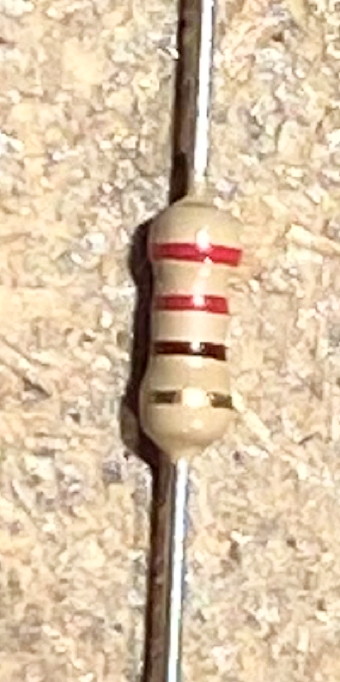 |
R4 is a current limiting resistor for the green LED, DS2.
 |
| 3 |
R6 |
330 Ω 5% 1/4 W resistor
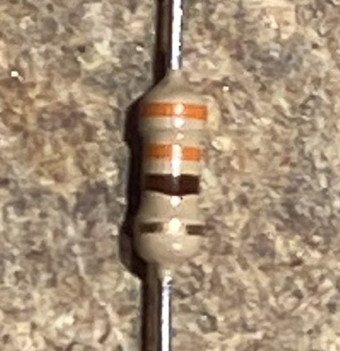 |
R6 is a current limiting resistor for the yellow LED, DS3.

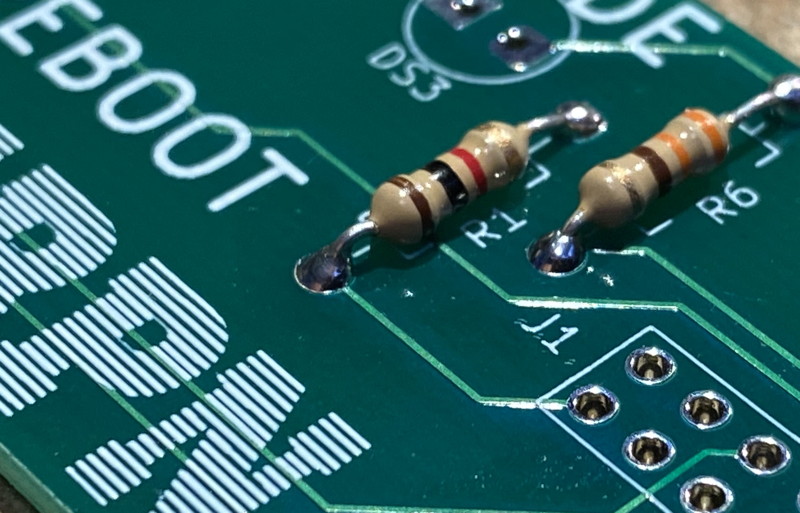 |
| 4 |
DS1 DS2 DS3 |
LEDs blue, green, yellow
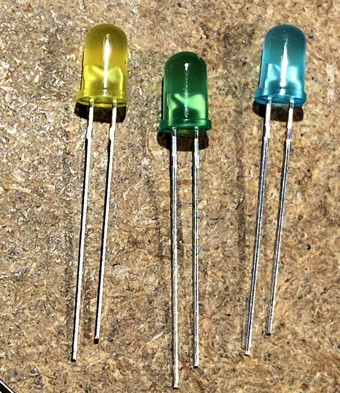 |
The LEDs are polarized. Follow the instructions here.
All 3 LEDs are drivin by Raspberry PI GPIO through a current limit resistor.
Since the LEDs each have a different efficiency and brightness, the current limit resistors were chosen to tune the LED to an appropriate level so the LED brightnesses appear to be balanced.
Note: The short wire on each LED, which is toward the flat edged side of each LED's plastic housing, goes to the pad on the left, and that is the ground connection.
The long LED lead goes into the hole where the signal-wire from the resistor is connected to the LED.
Feel free to install all 3 LEDs, bending their leads out to hold them in place, and then solder.
|
|
DS1 |
Blue
 |
DS1, Blue, is driven through a 1 K Ω resistor, more than 2x the resistance of either of the other LEDs.
For some reason, blue LEDs are naturally brighter?
Install the LED so it is flush with the board (no space between the bottom of the LED and the PCB) and so the squared off side of the LED body is to the left.

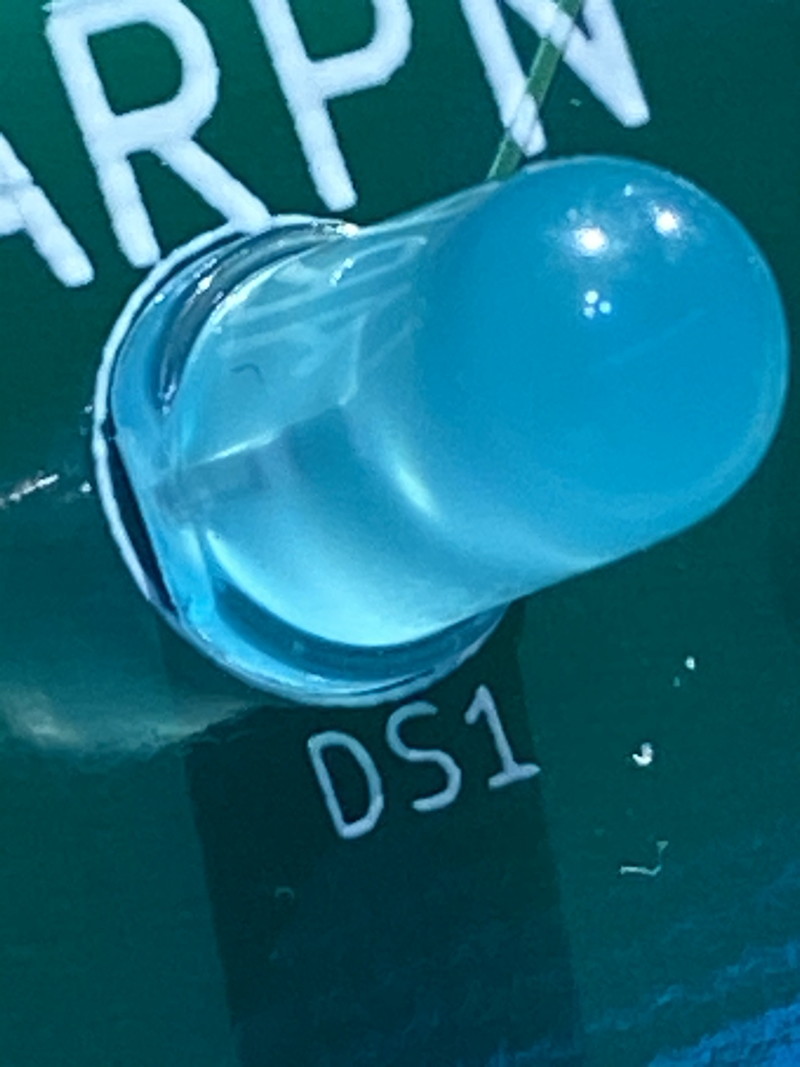
|
|
DS2 |
Green
 |
DS2, Green, is the dimmest of the LEDs, so we feed it through the lowest value resistor of the three, 220 Ω.
Install the LED so it is flush with the board (no space between the bottom of the LED and the PCB) and so the squared off side of the LED body is to the left.

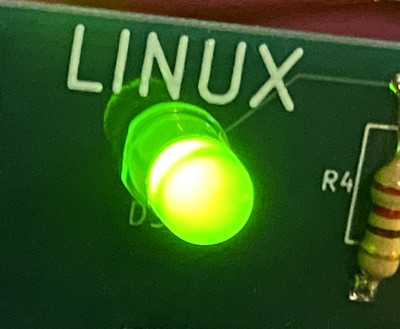
|
|
DS3 |
Yellow
 |
DS3, Yellow, is fed it through a 330 Ω resistor.
Install the LED so it is flush with the board (no space between the bottom of the LED and the PCB) and so the squared off side of the LED body is to the left.

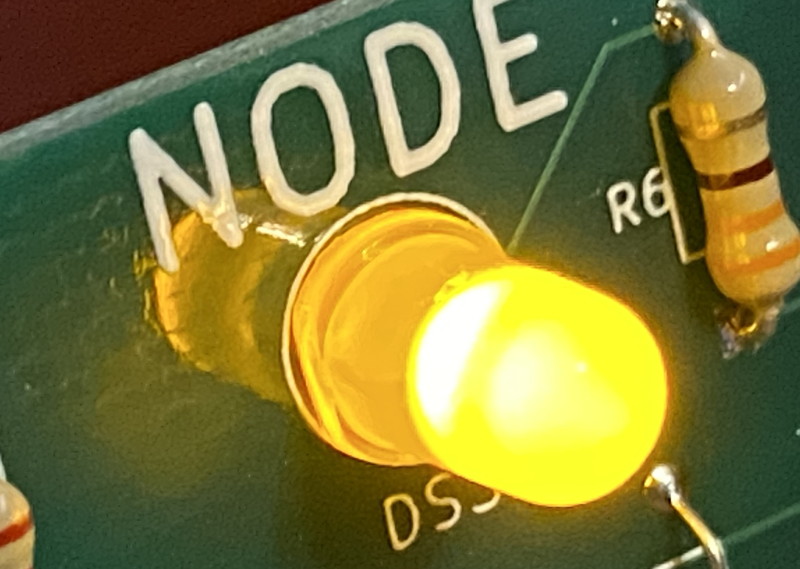
|
| 5 |
J1 |
10 pin 2x5 0.1" spacing socket
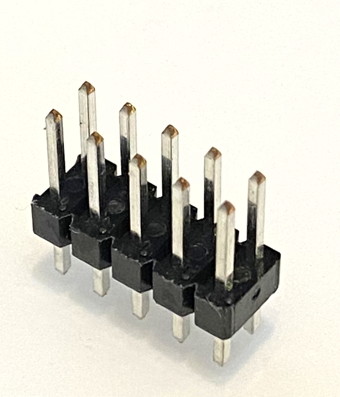 |
J1 is used for a ribbon cable connection to the Raspberry PI.
I suggest soldering one pin on the bottom of the board, probably in one corner, then, with the bottom of the board up, apply some pressure on the 2x5 connector, and heat up the one pin.
Now rock the board so the 2x5 connector is appropriately flush and allow the solder to cool.
Inspect and make sure the connector is placed properly.
Now solder the other 9 pins.

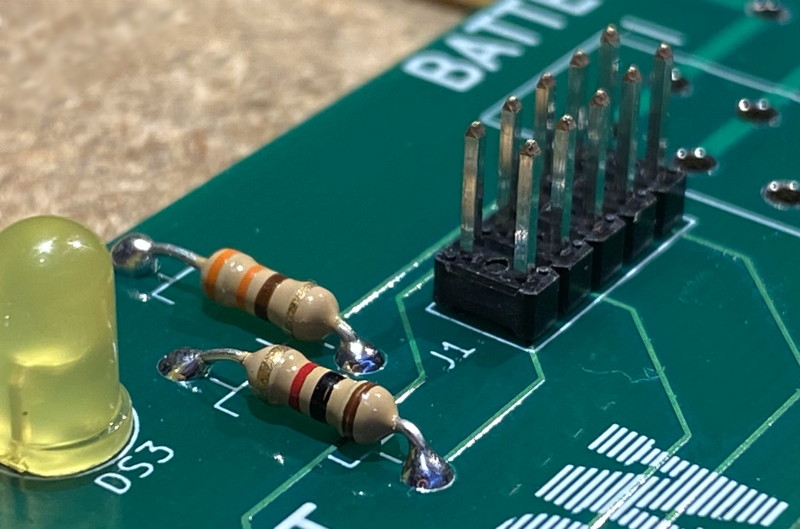 |
| 6 |
S1 and S2 |
push button switch
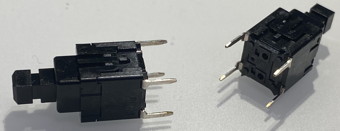 |
These two switches each are connected to a GPIO on the Raspberry PI and when pushed will pull the GPIO through a 1K resistor to ground.
The switches go in cleanly if they are lined up with the hole.
There is a wrong way to put them in, but they don't fit very easily in the wrong way.
2 right ways, 2 wrong ways.
The smooth sides of the switch body face left and right.
Solder one corner, then, while heating the corner, force the switch to seat flush with the board.
Then solder the other 3 legs.
Repeat for the other switch.

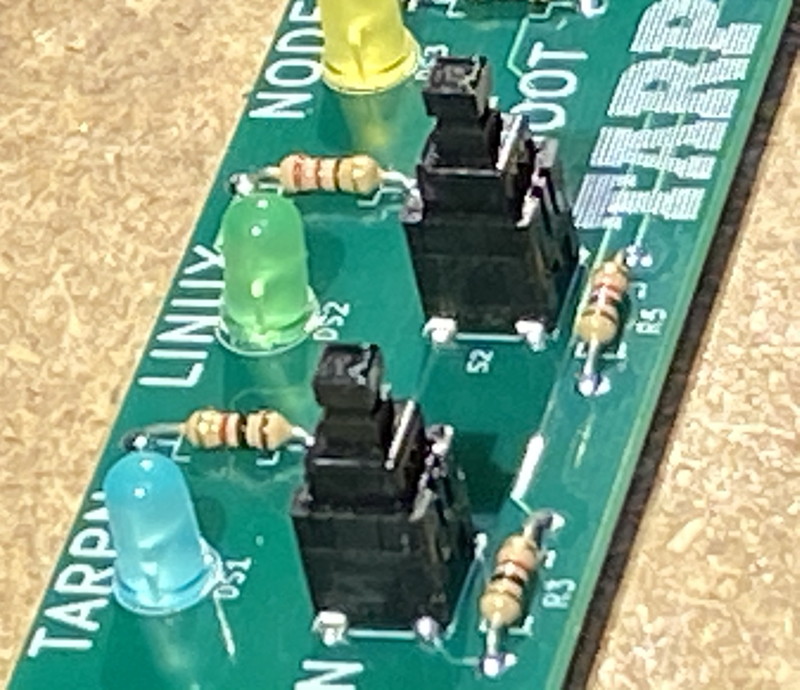 |
| 7 |
S3 |
3 A slide switch

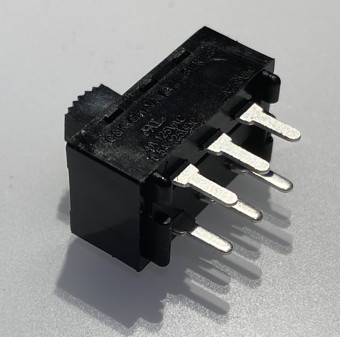
|
This switch connects or disconnects two lugs we'll be soldering into the back of the control panel in the next step.
The lugs are in circuit with a Gel Cel battery.
The switch is rated 3 amps which is the maximum the battery should be sourcing to the 5.2V power supply.
There is no on vs off orientation for the switch body, itself.
Solder one corner, then, while heating the corner, force the switch to seat flush with the board.
Then solder the other 3 legs.
Repeat for the other switch.

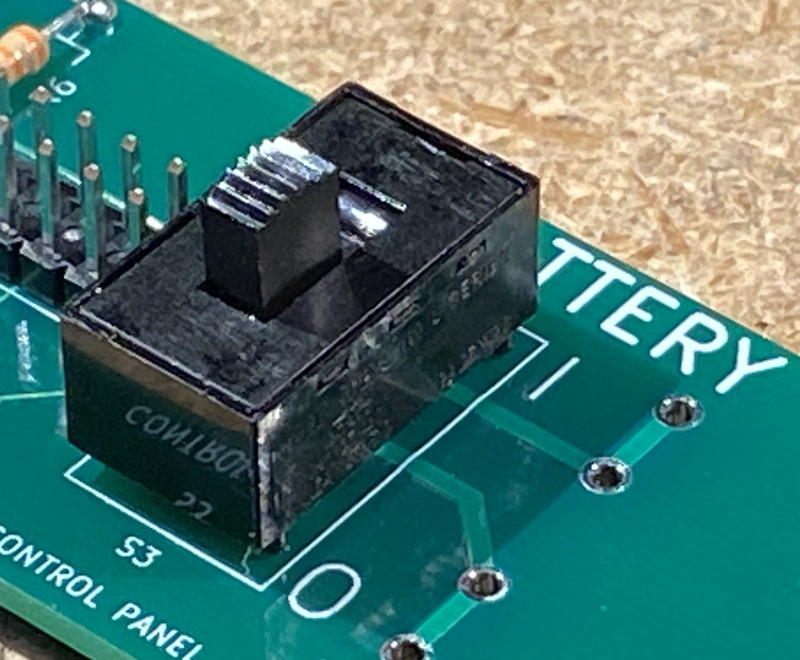 |
| 8 |
J2 and J3 |
Battery Lugs
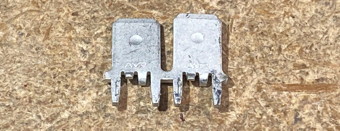
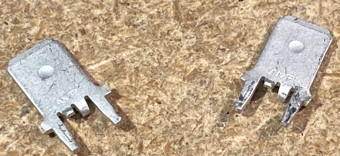
|
These parts come attached to one another.
I just wiggled them back and forth on the joint until they came apart.
These get pushed into the board from the back, right next to the big slide switch.
Solder them in front the front of the board.
Wierd, huh?
The point of this is that your battery wiring from the switchover circuit to the gel-cel will pass the +VCC lead through these connectors and the switch.
This lets you disconnect the battery after you shut-down your Raspberry PI's Linux system.
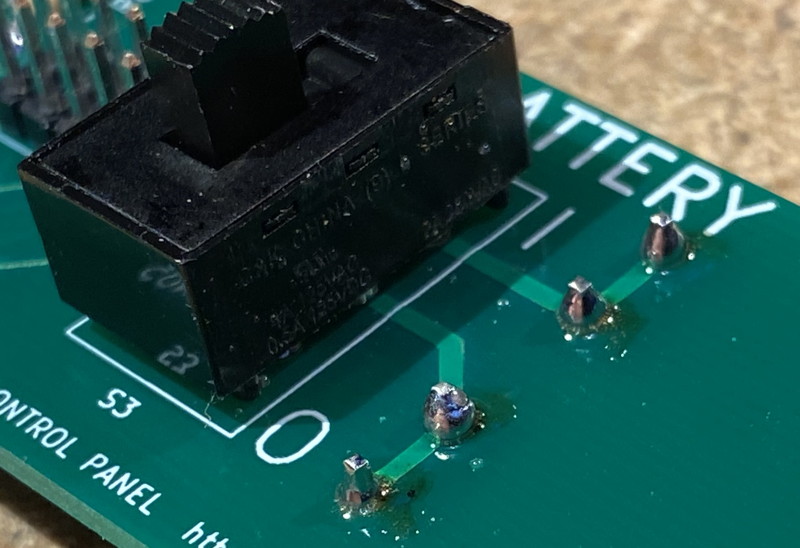
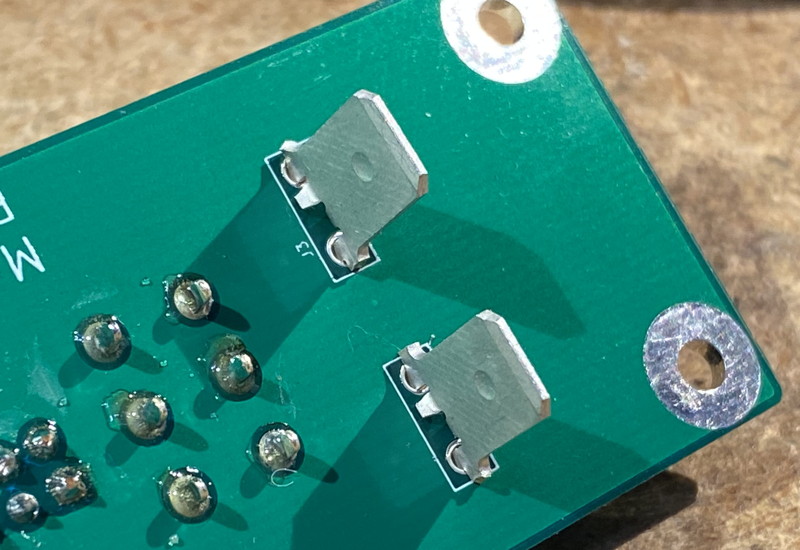 |
Digikey link for stacking header




 Inspect the leads to make sure the solder comes up over the lead for a visible amount.
Cut the lead at the wire, not the solder.
The solder is your friend.
What you do NOT want is a lead which is not making good electrical contact with the hole.
Inspect the leads to make sure the solder comes up over the lead for a visible amount.
Cut the lead at the wire, not the solder.
The solder is your friend.
What you do NOT want is a lead which is not making good electrical contact with the hole.


 Here's the control panel PCB's schematic. Click to load the PDF.
Here's the control panel PCB's schematic. Click to load the PDF.






